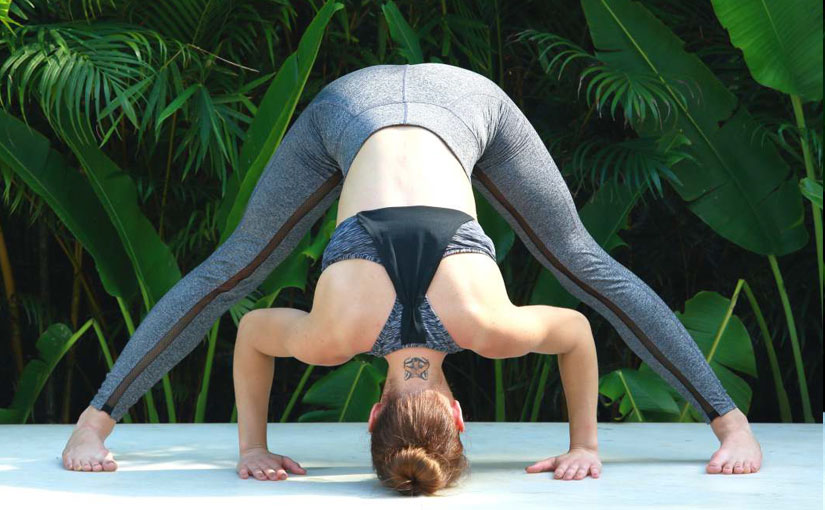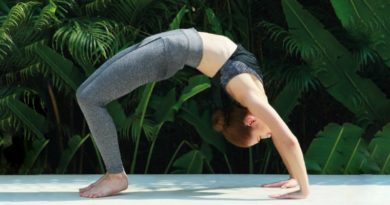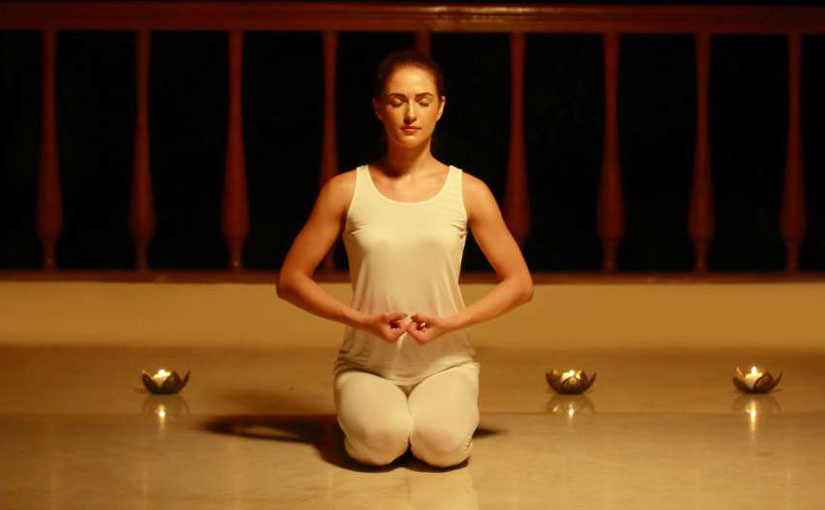Prasarita Padottanasana
This name is derived from Sanskrit words prasarita’ meaning stretched out, ‘pada’ meaning foot ‘uttan’ meaning intense stretch and ‘asana’ meaning posture.
Instructions: Stand straight on your mat, with your feet hip-distance apart and rest your hands on your hips. Exhale and gently soften your knees and bend forward from the hips (not the waist) keeping the knees straight and soft (beginners can bend their knees slightly). Bring your palms or finger tips to the floor slightly in front of or beside your feet. Beginners can cross their forearms and hold your elbows in case they cant touch the floor. Press the heels firmly into the floor and lift the hip toward the ceiling. Turn the top thighs slightly inward. Feel the fold and the stretch from your hip bone. If you feel it from the rounding of your lower back, you are doing something wrong. Exhale and maintaining the length of the front torso, lean the torso forward from the hip joints. As your torso approaches parallel to the floor, press your fingertips onto the floor directly below your shoulders. You can bend or extend your elbows fully. Your legs and arms then should be perpendicular to the floor and parallel to each other. Keep the head and neck elongated between the shoulders and keep the shoulders away from the ears. Hold the pose for as long as you can breathing softly.
Benefits:
- It improves blood circulation and rejuvenates the liver, kidneys and spleen.
- It improves flexibility of the hip joint and strengthens the knees, spine and the hamstring and calf muscles.
- It improves posture and alignment.
- It improves the functions of the endocrine and the nervous system.
- It eases tension in the back, shoulders and neck.
- It tones and activates the muscles of the abdomen and improves digestion.
- It calms the brain and provides relief from headaches, fatigue and mild depression.
Caution:
- Avoid this asana if you have a lower back or hamstring injury or if you suffer from sciatica or glaucoma.




